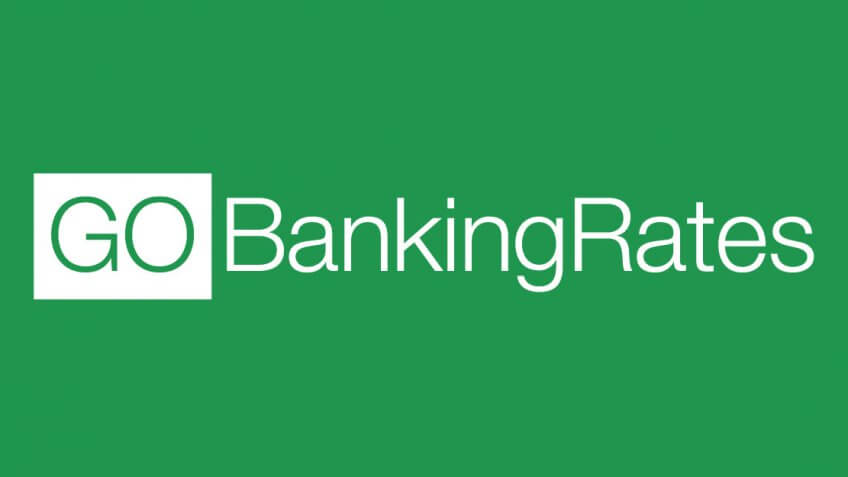How Much Interest on $1 Million Dollars Can You Earn?

Commitment to Our Readers
GOBankingRates' editorial team is committed to bringing you unbiased reviews and information. We use data-driven methodologies to evaluate financial products and services - our reviews and ratings are not influenced by advertisers. You can read more about our editorial guidelines and our products and services review methodology.

20 Years
Helping You Live Richer

Reviewed
by Experts

Trusted by
Millions of Readers
A $1 million investment can generate annual returns ranging from $4,500 to $100,000 or more, depending on the investment type and risk level. This guide explores various investment options, their potential returns and strategies to maximize your earnings.
Investment Options for $1 Million
How much interest does $1 million make per year? On average, investors can expect about 3% to 10% annual returns, depending on your time horizon, the type of investment you make and the risk associated with that investment will all affect the interest earned on your million-dollar bank account.
Here are some of the ways you can build interest on your $1 million and how much you might earn:
High-Yield Savings Accounts
A high-yield savings account allows you to safely store your money, as it earns more interest than a traditional savings account. Your money is also insured by the FDIC for up to $250,000 per depositor, per bank. Right now, you can earn around 4.00% to 5.00% APY, which is about $40,000 to $50,000 per year on your $1 million investment.
Certificates of Deposit
A CD is another safe, FDIC-insured way to invest your money. CDs earn interest over a set term, and you cannot withdraw — at least without penalty — until it reaches its maturity date. Interest rates on a CD can range from 3.50% to 5.00%. Using that example, $1 million earns $35,000 to $50,000 a year.
Mutual Funds
Mutual funds own a basket of stocks within a single fund, allowing you to invest in many company stocks simultaneously. Returns will vary based on the fund’s objectives and holdings, but something like an S&P 500 index fund might post an average return around 10% annually. This could earn you an average of around $100,000 per year on your $1 million investment.
Treasury Bonds or Notes
A relatively safe parking place for that cool million would be U.S. government debt, in the form of Treasury bonds, bills or notes. Current 20-year Treasury bonds yield 4.875%, which would mean you would earn $48,750 a year for a $1 million investment.
Bonds (or Bond ETFs)
Corporate or government bonds — outside of U.S. Treasuries — vary greatly in safety and return to the investor. You can buy individual bonds or a bond fund — or ETF — that offers interest on your investment. Most highly-rate bonds and bonds funds pay interest from 5% to 6%, which would earn between $50,000 and $60,000 per year on your $1 million investment.
Annuities
Annuities are insurance contracts that offer steady payments in retirement. There are several to choose from — fixed, variable and indexed annuities earn various returns, depending on how they are structured. You can earn from 3% to 8% per year, but may end up paying high fees. This would mean an income of $30,000 to $80,000 per year on your $1 million investment, before fees.
REITs
You can invest in real estate through Real Estate Investment Trusts (REITs), which are companies that you can invest in like a stock. These companies own and operate commercial and residential real estate, allowing you to earn money from rents collected. You can earn between 4% to 6% per year in REITS, which would earn between $40,000 and $60,000 per year on your $1 million investment.
Dividend-Paying Stocks
How much you can earn on $1 million with dividend-paying stocks will depend on the dividend yield. Average yields can vary by industry and company. Say, for example, you invest in dividend-paying stocks with an average yield of 2%, then your annual earnings would be $20,000. But you might earn more through price appreciation of the stock itself.
| Investment Option | Annual Return Range | Risk Level | Key Consideration |
|---|---|---|---|
| High-yield savings accounts | 4% to 5% | Low | – FDIC insured up to $250,000 per depositor, per bank – Highly liquid and safe |
| CDs | 3.5% to 5% | Low | – FDIC insured – Funds locked until maturity, early withdrawals may incur penalties |
| Mutual Funds, e.g., S&P 500 Index Fund | ~10% on average | Medium | – Diversified across many companies – Subject to market fluctuations |
| Treasury bonds or notes | ~4.875% | Low | – Backed by the U.S. government – Steady but modest returns |
| Corporate or Bond ETFs | 5% to 6% | Medium-Low | – Vary by issuer – Safer bonds yield less, higher-yield bonds carry more risk |
| Annuities | 3% to 8% | Medium | – Provides steady income – May have high fees and limited liquidity |
| REITs | 4% to 6% | Medium | – Real estate exposure without owning property – Earnings from rents and dividends |
| Dividend-paying stocks | ~2% — yield only | Medium-High | – Potential for both income and price growth – Returns depend on company performance |
4 Strategies to Maximize Returns
If you have $1 million to invest, you’ll want to maximize your returns while lowering your risk. There are several ways to approach your investment strategy that can earn you a real income while protecting your investment:
1. Avoid High Fees
When investing, choose low-cost index funds, ETFs, or fee-only advisors instead of high-fee mutual funds or annuities. Even cutting fees from just 1% to 0.1% saves about $9,000 per year on a $1 million portfolio. This helps you keep more of your returns working for you.
2. Use a Laddering Strategy
Build a bond or CD ladder by splitting your money into investments with staggered maturities, e.g., 1-, 3-, 5- or 10 years.
For example: When a 1-year Treasury matures, reinvest it into a new 10-year bond. This can create steady income and reduce interest rate risk.
3. Account for Inflation
Inflation erodes purchasing power, so include assets that outpace it, like stocks, real estate or TIPS.
For example: at 3% inflation, $1 million loses nearly half its value in 25 years. Investing helps preserve long-term buying power.
4. Diversify
Spread your $1 million across different types of investments, such as stocks, bonds, real estate, and cash equivalents. This helps you lower your investment risk through diversification, reducing volatility and improving long-term, risk-adjusted returns.
How To Diversify Your Investments: An Example
A portfolio with 60% stocks, 30% bonds and 10% cash can capture growth while cushioning downturns.
Tax Implications of Investment Income
When investing, it’s important to understand how taxes can affect your returns. If most of your investments are in tax-advantaged accounts — like a 401(k) or Roth IRA — you won’t have to worry about taxes when buying or selling investments, or when earning interest. You only pay before you invest, such as Roth accounts, or when you withdraw in retirement, such as with traditional accounts.
But if you have money in a taxable account, like a standard brokerage account, you might end up paying capital gains taxes on your earnings from your investments.
- Short-term capital gains: Short-term capital gains are charged when you earn interest or dividends on an investment, or when you sell an investment you’ve held for less than one year. Short-term capital gains rates are the same as your income tax rate.
- Long-term capital gains: Long-term capital gains are charged when you sell an investment you’ve held for more than one year. Long-term capital gains rates are 0% to 20%, and often lower than short-term capital gains rates.
You may receive lower tax rates on qualified dividends, and your income level can also affect the rate.
You might earn tax-free interest on certain investments, like municipal bonds. It’s a good idea to meet with a licensed tax professional when you invest larger amounts to ensure you’re only paying what you truly owe in taxes.
Hypothetical Investor Profiles
To see how different investment styles work in practice, meet three fictional investors who each take a unique approach to balancing growth and risk.
Conservative Retiree Chloe
Chloe is a retiree that doesn’t like risk, but wants a steady return in retirement.
She allocates her $1 million across:
- 40% to annuities
- 30% to CDs
- 30% to municipal bonds
Her blended return is about 4% annually, which provides roughly $40,000 per year in steady, low-risk income. She also lowers her state tax bill by incorporating municipal bonds into her investment strategy.
Growth-Focused Greg
Greg is still growing his wealth and working a high-paying job. He has a higher tolerance for stock market swings and investment more aggressively. He invests 70% of his $1 million in S&P 500 index funds and 30% in REITs. With an average return near 8%, Greg could earn around $80,000 per year in market gains and real estate income.
Balanced Betty
Betty is a balanced investor that wants average returns with less volatility.
She divides her $1 million among:
- 40% to bonds
- 30% to dividend-paying stocks
- 30% to mutual funds
Her average annual return is about 6%, giving her approximately $60,000 per year in combined dividends and growth.
Each of these investors matches their portfolio to their risk tolerance, income goals and timeline. The key is finding the right balance between safety and growth that fits your personal comfort level.
Actionable First Steps for New Investors
If you’re a new investor and have found yourself with sudden wealth of $1 million to invest, here’s what you can do:
Don’t make sudden lifestyle changes: It’s important to keep things steady in your life as you figure out your investing strategy. So you shouldn’t drop half-a-million dollars on a new house, or $100,000 on a new car without a plan in place.
Assemble a financial team: It’s important to have trusted professionals in your corner to wisely invest your money. Working with a fee-only financial advisor — also known as fiduciary — and a licensed tax pro can help you avoid big mistakes and build a plan you can stick to.
Define long-term goals before investing: Before you can choose investments, you need to know what your goals are. Write detailed goals, along with timelines, so you can tailor your investment approach accordingly.
Diversify investments to balance risk and return: Don’t put all your eggs in one basket. Spread your newfound wealth across different investments, asset classes and accounts to ensure you don’t lose all your money with any single investment.
FAQs on Earning Interest on $1 Million
Here are some answers to frequently asked questions about yearly interest on $1 million.- What is the 4% rule, and how does it apply to $1 million?
- The 4% rule calculates how much of your investment portfolio you can withdraw in the first year of retirement. It's based on the research of Bill Bengen, and states you can withdraw 4% of your portfolio in your first year of retirement, and your money will last at least 30 years — assuming a 50/50 bonds portfolio. This means you can withdraw $40,000 if you retire with $1 million, and then adjust upwards for inflation each year after.
- How do annuities compare to other low-risk investments?
- Annuities offer guaranteed income for a set amount of time — or for life — and are a solid low-risk investment choice. Some annuities have high fees and complicated contract structures that can hurt returns, though. Other options, like CDs, U.S. Treasuries, and Bonds could provide similar returns with lower fees, depending on how you invest.
- Can I live off the interest of $1 million in retirement?
- If you can live off around $40,000 per year before taxes in retirement, then yes, you can retire and live off the interest of a $1 million retirement portfolio. But if you need access to more than 4% of your portfolio, you might need to save a bit more before you can retire.
Our in-house research team and on-site financial experts work together to create content that’s accurate, impartial, and up to date. We fact-check every single statistic, quote and fact using trusted primary resources to make sure the information we provide is correct. You can learn more about GOBankingRates’ processes and standards in our editorial policy.
- U.S. Department of the Treasury. 2025. "Treasury Bonds."
- IRS. 2025. "Topic no. 409, Capital gains and losses."
 Written by
Written by  Edited by
Edited by 

























